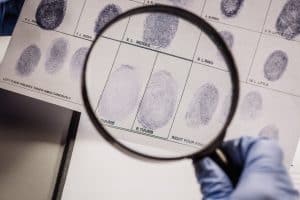Time To Read: 5 minutes
Did you know ears are as unique as fingerprints? We put a finger on it.
'Ello, ’Ello, ’Ello… What do we have ear?
Did you know your ears are as distinct as your fingerprints?
In fact, recognition of the uniqueness of the ear was established before Sir Francis Galton determined, in 1892, that every person’s fingerprints were individual.
The credit belongs to Frenchman Armede Joux, a modern pioneer of the study of ears. Forty years prior to Galton's discovery, Joux declared in Gazette des hopitaux de Paris that:
“Show me your ear and I'll tell you who you are, where you came from and where you are going.”
And another 50 years before Joux, Johann Kaspar Lavater, a Swiss poet, writer, philosopher, physiognomist and theologian, avowed that one could tell personality of a man by studying the sum of his parts - particularly his ears.
The ‘science’ of physiogonomy and phrenology have been well and truly debunked, yet the undoubtedly unique characteristics an individual leaves behind at a crime scene has been an invaluable aid to law enforcement for over a 100 years.
Earprints for criminal identification
Eavesdropping ne’er-do-wells can be identified by their earprint, formed by natural waxes and oils, and left behind at crime scenes. Investigators routinely check for the print on doors and windows, but it has offered less predictable identification results than fingerprints.
But still, scientists are hopeful of popularising the technique, and have developed a computer algorithm claimed have an uncanny success rate in identifying individuals.
“When you’re born your ear is fully formed. The lobe descends a little, but overall it stays the same. It’s a great way to identify people,” said Mark Nixon, a computer scientist at the University of Southampton and leader of the research.
Nixon and his team presented a paper at the IEEE Fourth International Conference on Biometrics that claimed individual identification with 99.6% accuracy.
While forensic scene-of-crime officers do collect ear prints, it is generally not considered a key piece of evidence. However, when it is combined with other clues, it does lead to successful convictions in cases in Britain and in Europe.
Your Ears Are Unique As You Are
But the uniqueness of your ear is not just limited to the outer ear. Each one processes sounds slightly differently too.
The microscopic hair cells in the cochlea of our inner ears, detects sound waves and turns them into minute electrical signals for our brain. And they also produce their own faint sounds which is unique to us.
This occurs as a byproduct of the process that amplifies quiet sounds. These cells vibrate and produce a noise that is inaudible to the human ear, but can be detected using sensitive microphones. This is called otoacoustic emissions.
Doctors play a series of clicks to see how the hair cells respond as a guide to determine any potential hearing loss. This technique to test the hearing of very young children.
No Such Thing As One Size Fits All
There is no such thing as a ‘one size fits all’ approach to hearing aids. We strongly recommend that people do not purchase hearing aids online. You need the right solution worked out for you by your audiologist.
Your hearing aid needs to be programmed to suit your individual hearing loss which requires an in-depth test. Completely-in-canal (CIC) types of hearing aids require individual moulds to ensure a tailored and comfortable fit.
Further reading
When hearing aids are an integral part of your lifestyle, it helps you get the most out of life. We share some lifestyle articles here:
- The colour of noise
- The history of hearing aids
- Safe driving with hearing loss
- Bright prospects for metal detectorists and gold prospectors
- Food, Your Ears and Good Hearing
- Why TV Commercials Sound Louder Than The Programs
- Why It’s Important To Overcome Social Isolation After Hearing Loss
- How to talk to a loved one about hearing loss
- How to Successfully Travel with Hearing Aids
- Did I just hear that right? (Misheard song lyrics)
- Putting sound in movies
- Famous people who wear hearing aids
